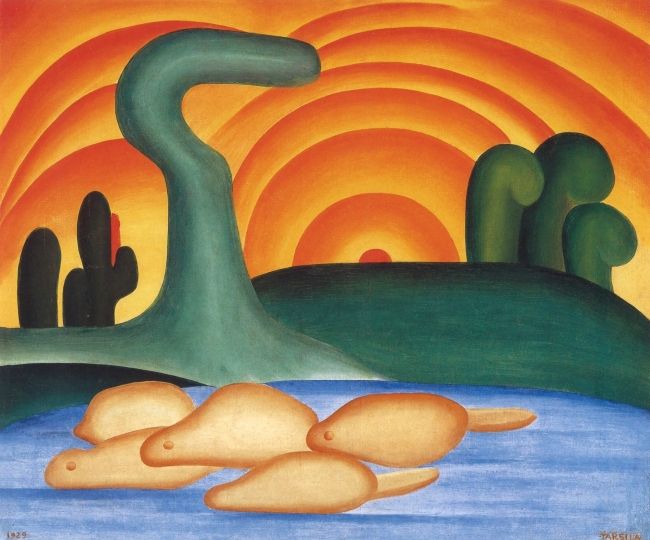Descripción de la Exposición
‘Mira Schendel. Sarrafos and Black and White Works,’ is the first exhibition focused upon the last two series in the career of a seminal figure of Latin American modern art. Organized with Olivier Renaud-Clément, this exhibition examines Mira Schendel’s Sarrafos (1987) and Brancos e Pretos (1985 – 1987) series through works that attempt to reconcile the practices of painting and sculpture.
On view through 21 October, Hauser & Wirth’s third solo exhibition of works by Schendel includes numerous loans from major private collections and public institutions.
Born in Zürich, Switzerland, in 1919, Mira Schendel was raised in Milan, Italy, where she pursued studies in art and philosophy. Beginning in 1941, she was forced to move between Bulgaria, Austria, and Yugoslavia to avoid persecution, finally settling in São Paulo, Brazil, in 1953. Arriving in her new country at a moment of social and artistic revolution, Schendel immersed herself in São Paulo’s vibrant cultural and intellectual milieu. Although she was initially involved with the Concrete and Neo-Concrete movements that emerged in the 1950s, Schendel quickly established her independence, developing a distinct visual language influenced by her engagement with a circle of poets, physicists, philosophers, and fellow visual artists. While these peers sought a uniquely Brazilian answer to European Modernism, Schendel charted an autonomous course, forming her own approach to abstraction and drawing on influences ranging from quantum physics to phenomenology, from Zen Buddhism to experiences of displacement.
The singular combination of ethereality and tangibility that characterizes Schendel’s art finds its coda and climax in the Sarrafos and Brancos e Pretos series on view at Hauser & Wirth, 69th Street. The Sarrafos are white tempera panels, each starkly intersected by a single, angled black bar that enters into the physical space of the viewer, demanding to be experienced rather than viewed. Resembling fragmented crossbeams, these black bars act as gestures of individuation, interrupting the monochromatic surfaces from which they protrude.
The Sarrafos series comprises a total of twelve works, six of which are included in this exhibition. Schendel observed that they were her first successful attempt at ‘aggressiveness,’ which she attributed to the impact of the sociopolitical climate in which they were made. Brazil was then in a state of upheaval, with an economic recession looming and protests against the military dictatorship increasing. Referring to the series’ 1987 debut, Schendel explained, ‘[Sarrafos] sprang from the moment of lack of determination and disorder that Brazil lived through in March of this year when apparently we were living in a tropical Weimar…At that time, just like everybody else, I also felt a need to get my bearings straight. And these works constitute a reaction to the standstill situation of the moment.’
Developed from 1985 through 1987, Schendel’s Brancos e Pretos series just preceded her Sarrafos. Lyrical in their emphasis on movement and space, these tempera and gesso paintings appear at a distance to be flat panels punctuated by painted arcs and lines; but closer inspection reveals slight variations of texture that cast shadows and form subtle sculptural reliefs.
The exhibition continues with Schendel’s related drawings and works on paper from the 1960s through the 1980s. Among these is ‘Untitled (Sarrafinhos series),’ a delicate four-part work on paper from the 1960s, with compositions that anticipate the Sarrafos’ rigid wooden projections. Also on view are the Brancos e Pretos’ precursors, an untitled series of works circa 1986 on Japanese rice paper – a material that became a hallmark of Schendel’s oeuvre, first given to her by the Brazlian art critic and physicist Mário Schenberg. For these works, Schendel arranged and collaged sheets of translucent rice paper to create distinct, monochromatic planes, intersected by single black marks of wax crayon.
Schendel’s Aquarelas, Aguadas, and Toquinhos series illuminate her enduring fascination with materials and their technical applications. In her treatments of paint and ink, ranging from dense, dark marks to liquefied planes of neutral color, Schendel is found vacillating between opacity and transparency, foreground and background, developing an expressive range that would act as creative fodder for decades to come.
‘Mira Schendel. Sarrafos and Black and White Works’ is organized with the collaboration of Bergamin & Gomide, São Paulo and the support of lenders.

Actualidad, 21 sep de 2017
Nueva York sigue mostrando apetito por el arte brasileño
Por GUSTAVO PéREZ DIEZ
Primeras muestras en un museo o centro de arte de los EE.UU. de Tarsila do Amaral y José Leonilson se unen a las de Mira Schendel, Iran do Espíritu Santo, ...

Exposición. 11 abr de 2025 - 28 sep de 2025 / Museo Guggenheim Bilbao / Bilbao, Vizcaya, España

Formación. 08 may de 2025 - 17 may de 2025 / Museo Nacional Centro de Arte Reina Sofía (MNCARS) / Madrid, España